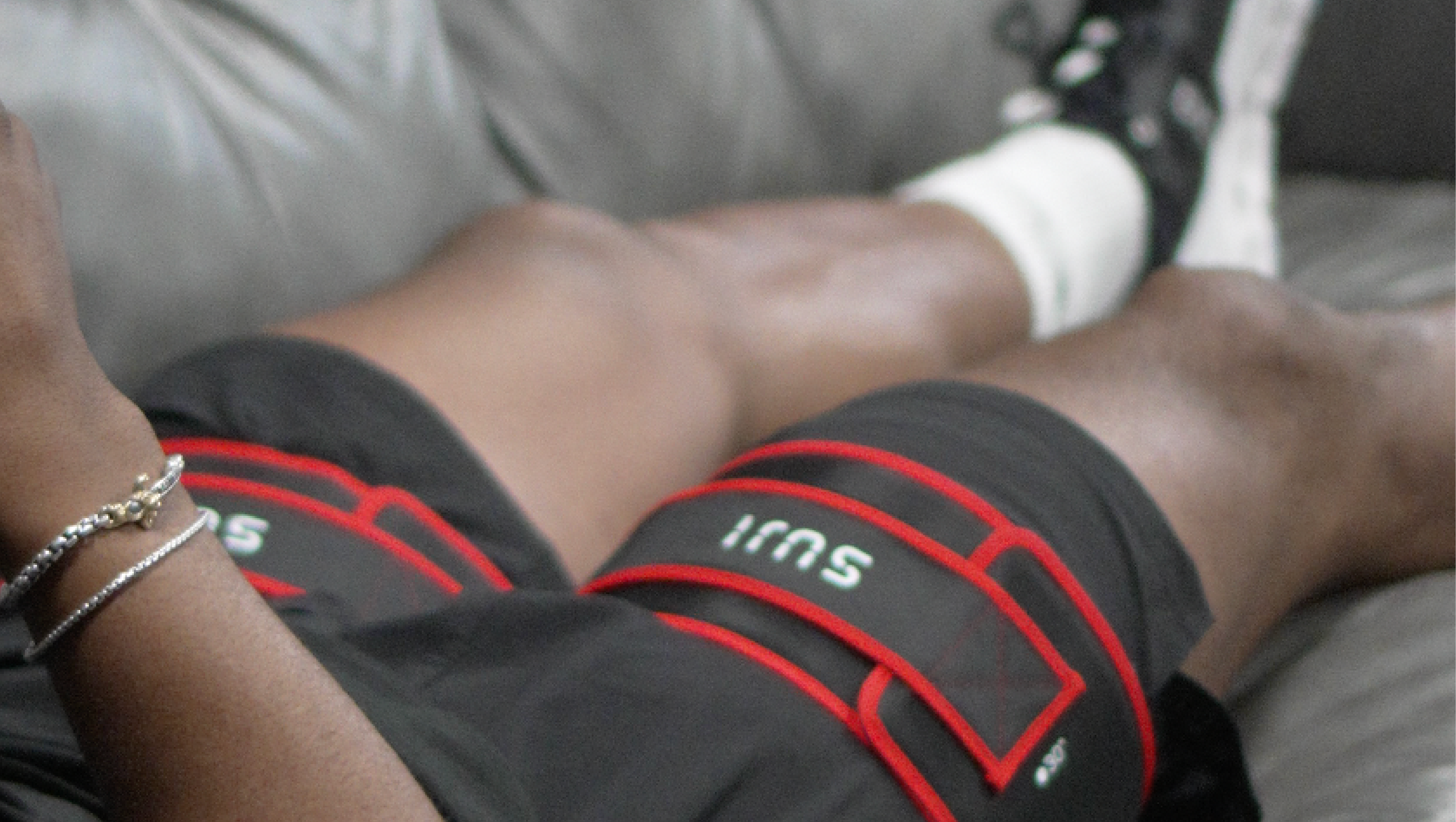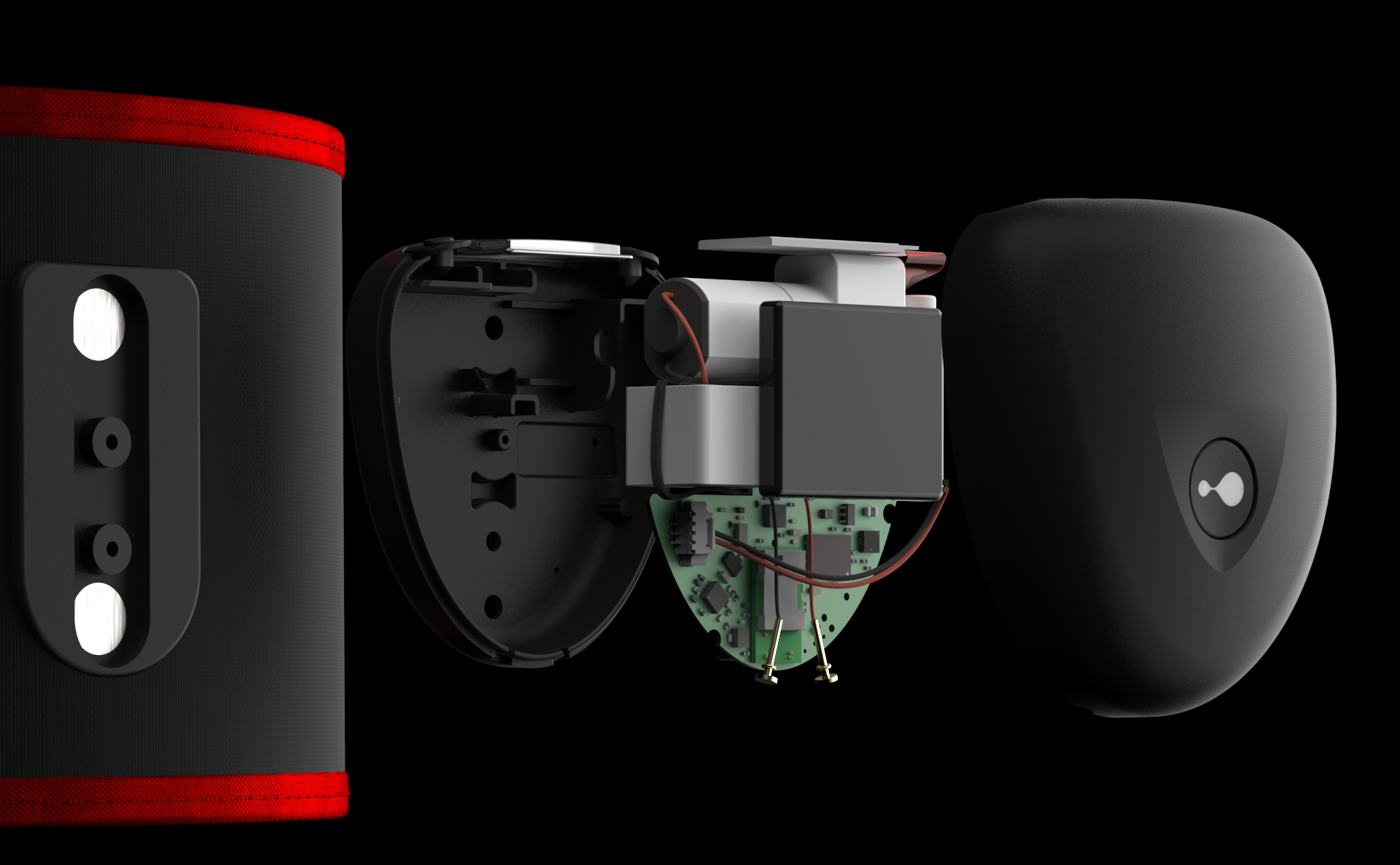The Science and Practicality of Cyclic Passive Blood Flow Restriction (BFR) for Enhanced Athletic Recovery
Introduction
Cyclic Passive Blood Flow Restriction (BFR) is a scientifically validated modality for passive athletic recovery. One of its defining characteristics is the alternation between periods of high occlusion and reperfusion. This approach has garnered considerable attention for its effectiveness in expediting the recovery processes of athletes. In this post, we delve into Passive BFR as an incredibly effective passive recovery modality for athletes. We will also explore how Suji, as a practical, portable, and scalable solution, contributes to its appeal for athletic trainers working with diverse rosters.

Cyclic Passive Blood Flow Restriction (BFR)
At its core, Passive BFR necessitates the application of a pneumatic tourniquet or cuff to a limb, typically the upper arm or thigh, calibrated to a specific pressure, typically around 80% of the limb occlusion pressure (LOP). This specific pressure level ensures effective blood flow restriction without discomfort or harm to the athlete.
The Crux: Fluctuating Between High Occlusion and Reperfusion
The pivotal element in Passive BFR's potency lies in the alternation between periods of high occlusion and reperfusion. During the occlusion phase, the cuff restricts blood flow to the proximal muscles, inducing a series of physiological responses, including a significant hormonal response with increases seen in Growth Hormone (GH) and Insulin-Like Growth Factor-1 (IGF-1), both of which play key roles in muscle growth and repair.
The subsequent reperfusion phase is equally essential. During this phase, the cuff pressure is released, permitting the restoration of blood flow to the previously restricted muscles. This phase is crucial for clearing metabolic waste products generated during high-intensity exercise and providing the muscle tissue with an influx of oxygen and essential nutrients for recovery.
The tangible effect for the athlete is simple: reduced muscle soreness, a reduction in muscle fatigue, and expedited recovery!

Scientific Rationale
The scientific rationale behind Cyclic Passive BFR is reinforced by the work of Page et al. (2017) and Beaven et al. (2012).
Page and colleagues, in particular, employed cycles of high occlusion and reperfusion to underline the efficacy of this approach. In this study, participants' muscle damage was induced by completing 5 sets of 20 reps of repeated drop jumps from a 0.6m box. Following this, participants either completed a control protocol or they completed the following Passive BFR protocol in a supine position.
Cuff Placement = Upper Limb
Pressure of cuff = 220 mm Hg
Time under occlusion = 5 mins
Time for reperfusion = 5 mins
Total number of cycles = 3
In the days following the muscle damage protocol (measured at 24 hours, 48 hours, and 72 hours), participants reported staggering reductions in delayed onset muscle soreness (DOMS) compared to the control group. Their findings showcased a remarkable ~28% reduction in DOMS, reaffirming the impact of Cyclic Passive BFR on recovery timelines.
The authors concluded, "This investigation shows that intermittent lower limb occlusion administered after a damaging bout of exercise reduces indices of muscle damage and accelerates the recovery in physically active males." This was followed by the statement that Passive BFR "may be used by practitioners as a simple and cost-effective tool to help athletes recover from exercise."
Similarly, Beaven et al. (2012) saw significant beneficial results from participants exposed to passive BFR post-exercise. The passive BFR group recovered significantly quicker than a control group after exercise.
Countermovement jump test scores were reviewed, with "concentric (effect size (ES) = 0.36) and eccentric (ES = 0.26) velocity recovering more rapidly compared with the control. There were also small beneficial effects on 10- and 40-m sprint times. In the squat jump test, there were delayed beneficial effects of occlusion on eccentric power (ES = 1.38), acceleration (ES = 1.24), and an immediate positive effect on jump height (ES = 0.61). Thus, specific beneficial effects on recovery of power production and sprint performance were observed both immediately and 24 hours after intermittent unilateral occlusion was applied to each leg."
Practicality and Portability
Beyond its scientific underpinnings, BFR distinguishes itself through its practicality and portability. Unlike conventional recovery modalities, such as compression boots, Passive BFR permits athletes to take ownership of their recovery with a far quicker setup time and ease of use. This accommodates athletes' busy schedules and improves their adherence to prescribed recovery protocols.
Scalability for Comprehensive Rosters
One of the perennial challenges encountered by athletic trainers lies in managing recovery strategies for sizable teams. The adaptability of BFR makes it a cost-effective and efficient solution for this purpose. As noted by Patterson (2021b), systematic incorporation of BFR into team recovery protocols streamlines the recovery process. Simultaneous use with multiple athletes ensures that each individual benefits from this methodology, irrespective of the team size.
This is where Suji comes into its own! Straightforward and Efficient Recovery Technology.
One of Suji's super strengths lies in its ability to simplify and streamline BFR recovery protocols. The Suji app empowers athletic trainers to design specific recovery protocols tailored to the unique needs of their athletes. This customization ensures that athletes receive the exact recovery treatment required to address their individual demands.
The real game-changer is the system's capacity to automatically run through the entire protocol. This automation not only saves valuable time but also enhances the consistency and precision of the BFR application. No longer do athletic trainers need to manually oversee each step; Suji ensures that each athlete receives the prescribed recovery regimen without fail. With Suji’s market-leading software, athletic trainers can control and monitor multiple Suji units simultaneously from a single phone or tablet. This positions Suji as the only BFR technology solution that offers speed of set up, accuracy, and scalability across a full roster of athletes.
Suji's ascent to prominence within the realm of BFR technology is not by chance. It is built on a foundation of exceptional features and the trust it has gained from prestigious institutions. Currently, Suji is relied upon by 59% of Power Five D1 programs, which represent some of the most renowned collegiate athletic institutions. Moreover, Suji is also embraced by 28% of all NBA, NFL, and MLB teams, further attesting to the credibility and effectiveness of Suji's offerings.
Suji's specific in-app Recovery feature is heavily implemented on a daily basis with hundreds of athletes. If an Athletic Trainer is utilizing the Suji app, 35-40% of the time they are implementing a passive recovery protocol on an athlete!

Accurate Application
Accurate application of BFR is paramount, as improper pressure levels or timings can be detrimental. Suji's technology addresses this concern by delivering precise pressure control and timing throughout the recovery session. This accuracy is crucial in optimizing the physiological responses of BFR, leading to improved outcomes in terms of recovery and reduced muscle soreness.
Furthermore, Suji's platform allows for real-time monitoring of the BFR session, providing athletic trainers with valuable data on the athlete's progress. This data-driven approach enables trainers




Leave a comment
This site is protected by hCaptcha and the hCaptcha Privacy Policy and Terms of Service apply.